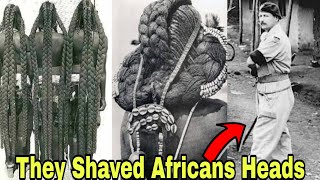Ask History: Wigs Of The Founding Fathers | History
- Posted on 18 February, 2013
- Hair Knowledge
- By Anonymous
Did all the Founding Fathers wear wigs? Get the answer.
HISTORY®, now reaching more than 98 million homes, is the leading destination for award-winning original series and specials that connect viewers with history in an informative, immersive, and entertaining manner across all platforms. The network’s all-original programming slate features a roster of hit series, epic miniseries, and scripted event programming. Visit us at HISTORY.com for more info.
When you picture America's founding fathers, one thing stands out: those powdery white wigs. But what were those wigs all about and did all the founding fathers wear them? The custom of men wearing wigs was actually started by French King Louie. The thirteenth who wore a wig to cover his premature balding by the 1700s wearing a wig, was all the rage among English and French noblemen wig soon became a distinctive status symbol of the upper class. Certain professions adopted wigs as part of their official costume, a tradition that continues in the British legal system. Today. Wigs could be made from horse goats or yak hair, but the most desirable expensive ones were made from human hair, wig wearing also caught on in America, as in Europe. Wigs in America were a symbol of wealth and status. Some rich southerners even bought wigs for the slaves who worked in their homes to show their upper-class status. Most of the founding fathers belonged to the professional privilege class and, as we can see in portraits of the time, many of them followed the wig wearing trend, but not all of them. George Washington kept his own hair long and tied back in a ponytail, otherwise known as a queue, but he did powder his hair. According to contemporary custom, Benjamin Franklin didn't wear a wig or powder his hair. He wore a Coonskin cap in the winter to keep his balding scalp warm and to show his allegiance to the common man and though Thomas Jefferson did patronize a Williamsburg wig maker early in his career. He didn't always wear them by the time he was living in Paris in 1784 to 89. He wore his hair long and tied back. He later cut it short, but continued to use powder and pomade. By the time the Revolutionary War ended. Wigs were on their way out with revolution sweeping through both America and France, men tossed off the old rules and symbols of status and class, including the ones they were on their heads in the 19th century, only the most conservative men continued to wear wigs and even Then save them for formal occasions how to rewire wit. Sin became more costume than custom, but one thing's for sure. It'S not going to make a comeback in America any time soon. Oh





Comments
gyrofoam1: Fashion. You can look at pictures from any particular period in history and get a reasonably accurate handle on when it's from.
truth betold: so fascinating! love when guys talk trash about women wearing wigs when they did once a upon a time too! haha